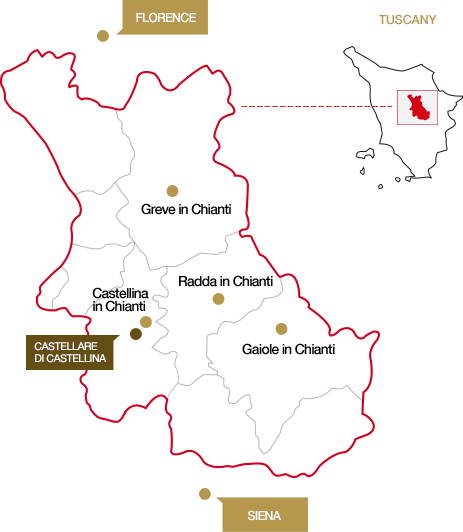
The Chianti Classico region covers an area of the Tuscan hills that stretches for about 20 kilometres in the vicinity of Siena, Arezzo and Florence. The area, classified as a plateau and lying at an altitude of between 200m and 700m above sea level, is a shield of arenaceous substrates and marlacious limestone, shale clays (galestri), sand and pebbles.
As well as the terrain's hilly geology and morphology the climate also plays its part, with high temperature ranges between day and night that make the area particularly suitable for the slow and correct ripening of the grapes. In addition to the best Sangiovese clones, the terroir hosts indigenous and international grape varieties equally capable of yielding wine of the highest quality standards.
Wine bottles from the Chianti Classico - a Controlled and Guaranteed Denomination of Origin (DOCG) area - are always marked with the Gallo Nero (Black Rooster) symbol, the emblem of the ancient League of Chianti.
Chianti Classico di Castellare is produced starting with a selection of the best Sangioveto clones, the noble indigenous version of Sangiovese, and other exclusively indigenous varieties such as Canaiolo, Colorino and Malvasia Nera.
Largely exposed to the south-west, the vineyards of the Chianti Classico give the wine a floral bouquet of violet, iris and viola mammola, characteristic of the sandy terrain, and an aroma of forest fruits typical of the soil's calcareous component. The soil varies from clay/sandy to pebbly with medium percentages of clay, a low quantity of organic matter and a small assimilable phosphorus content.
The yields per hectare at Castellare are very low, far below the maximum set by the Chianti Classico DOCG regulations.
The company Castellare di Castellina